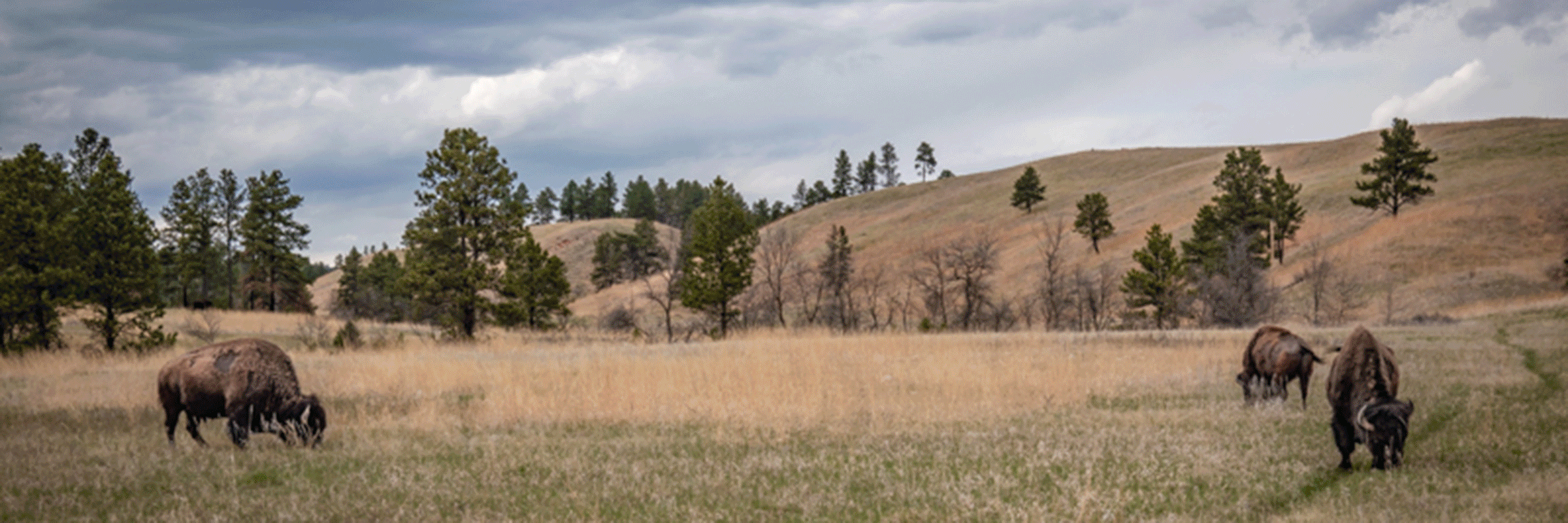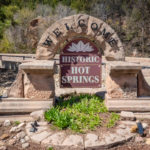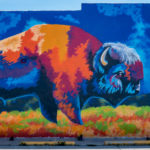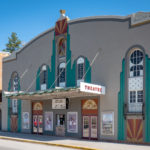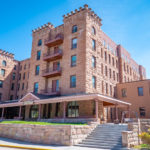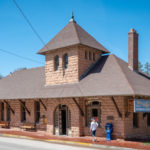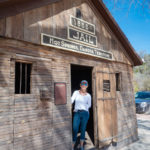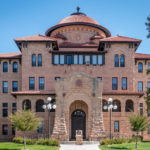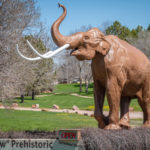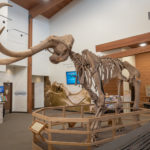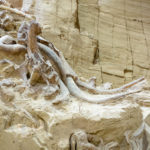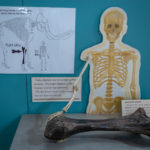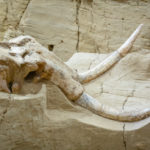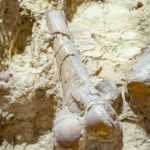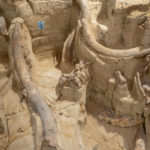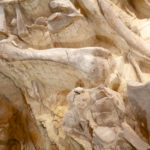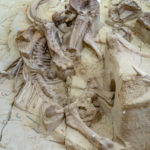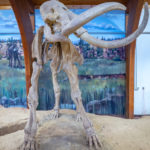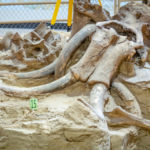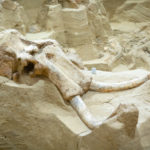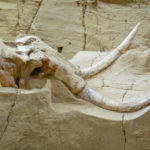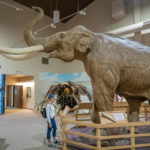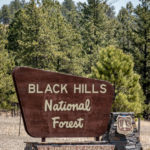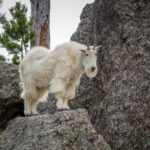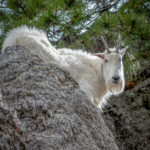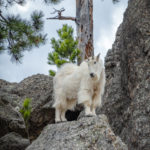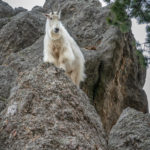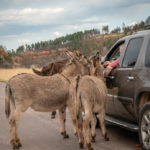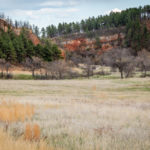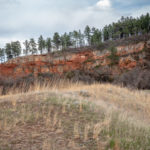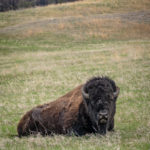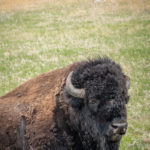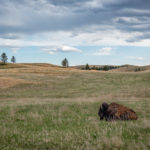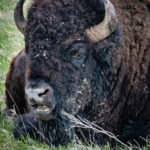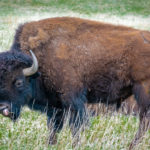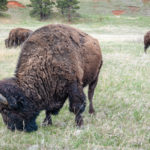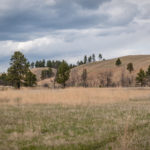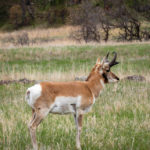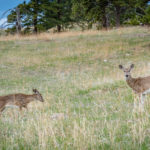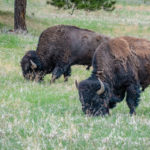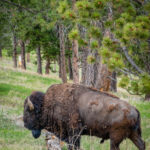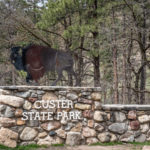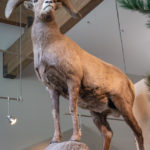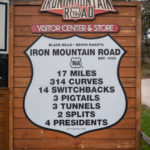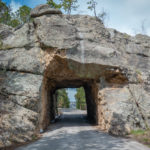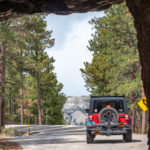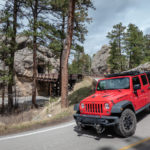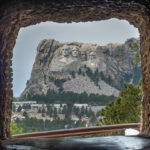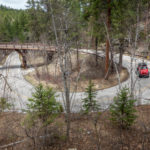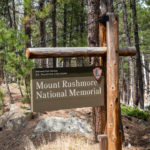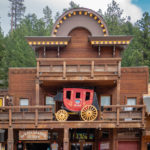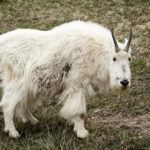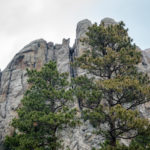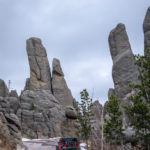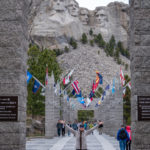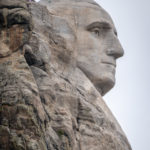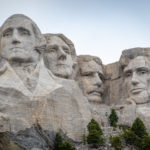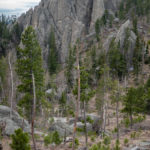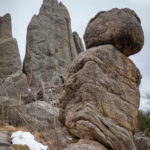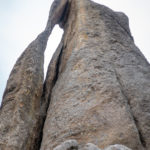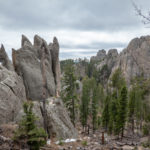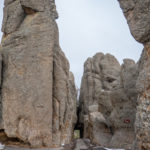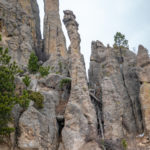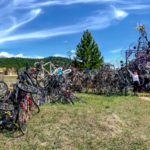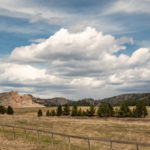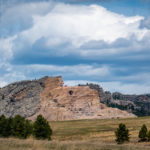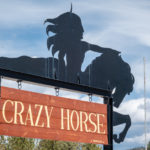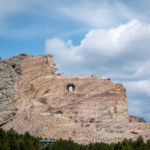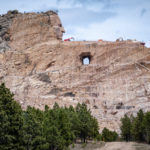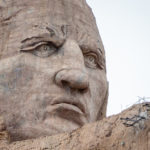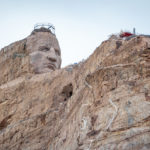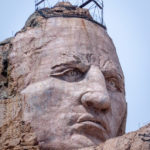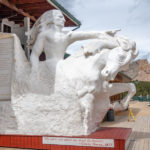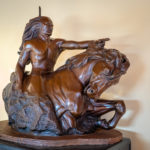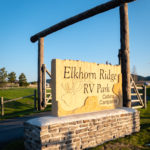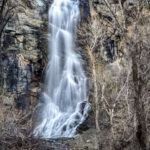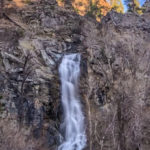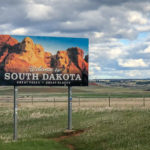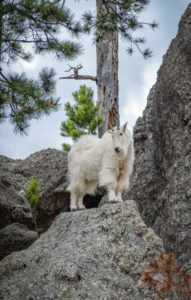
On our way to South Dakota from Colorado our GPS in the RV took us on a dirt road for 16 miles, where we did not see another vehicle, and don’t know why it took us this route. It was terrible for both the RV and the Jeep’s hood were blasted with rocks. Finally we arrived at the KOA in Hot Springs, thankful to be there after the worst drive ever!! Hot Springs does have warm springs which were considered sacred by the Native Americans. The city of Hot Springs developed in the 1880s as a resort community, with visitors drawn to the restorative and curative properties of its mineral springs. One can visit the hot springs today at the Evans Plunge built in 1890, with its naturally warm 87 degree spring water. We walked through the historic city center taking many photos of the beautiful wall murals and many unique sandstone buildings. Hot Springs is also home of a US Department of Veterans Affairs Hospital, designated a National Historic Landmark in 2011 for its architecture and history. We walked up the hill to view the hospital, formerly known as the Battle Mountain Sanitarium, the 100-bed center was built in 1907 to treat former soldiers suffering from rheumatism or tuberculosis, believed to be treatable by the region’s mineral springs and the thin dry air.
Our next stop was to visit the Mammoth Site near Hot Springs, which has the largest concentration of Columbian mammoths in the world. It is an active paleontological dig site, and the current mammoth count is 61, with 58 Columbian and 3 woolly mammoths, as well as the remains of a giant short-faced bear, camel, llama, prairie dog, wolf, fish, and numerous other plant and invertebrate fossils. Paleontology is the study of pre-existing life based on fossils, and we were able to see actual portions of the animal, such as bones, teeth or shells. This site was discovered in 1974 during excavating for a housing development. More than 26,000 years ago, large Columbian and woolly mammoths were trapped and died in a spring-fed pond near what is now the southwest edge of Hot Springs. This was a fascinating place to visit as the fossils were easily viewed and there are a lot to see. Click on thumbnail to view images
Hot Springs and Mammoth Museum
Black Hills
The name “Black Hills” is a translation of the Lakota words Paha Sapa meaning “hills that are black”, the hills were so-called because of their dark appearance from a distance, as they were covered in trees. The Black Hills Forest Reserve was created in 1897, by President Grover Cleveland, after a series of devastating wildfires, and was redesigated as a National Forest in 1907. Many tribes frequented the Black Hills for at least the past 10,000 years. The forest has an area of over 1.25 million acres and is managed by the Forest Service. The mountains and other key features in and around the Black Hills were considered sacred to indigenous peoples. It encompasses three distinct mountain ranges: the Black Hills, the largest, and the Elk Mountains in South Dakota as well as the Bear Lodge Mountains in Wyoming. We drove through Custer State Park on the Iron Mountain Road, a road that engineers once said couldn’t be built. We enjoyed lots of wildlife: the mountain goats playing on the rocky cliffs beside the road, herds of buffalo, pronghorns and mule deer, as well as pigtail bridges, magnificent Black Hills scenery, and a tunnel that frames Mt Rushmore.
Also, we drove along the Needles Highway, finished in 1922, a more than 14-mile road through pine and spruce forests, the highway is named after the high granite “needles” it winds along. The Needle’s Eye Tunnel is very small and only one way and is truly unique. The Needles Eye is actually a rock pinnacle that looks like a needle’s eye next to the tunnel. Then we visited Mt Rushmore in the Black Hills, built from 1927 to 1941by Gutzon Borglum and his son Lincoln. The sculpture features the 60-foot heads of Presidents George Washington (1732-1799), Thomas Jefferson (1743-1826), Theodore Roosevelt (1858-1919), and Abraham Lincoln (1809-1865). The four Presidents were chosen to represent the nation’s birth, growth, development, and preservation, respectively. It’s quite a site to behold! Click on thumbnail to view images
Crazy Horse Memorial
The Crazy Horse Memorial is a mountain monument, carved out of Thunderhead Mountain, still under construction on privately held land in the Black Hills. It will depict the Oglala Lakota warrior, Crazy Horse, riding a horse and pointing into the distance. Crazy Horse was a Native American war leader, his most famous actions against the US military included the Battle of the Bighorn (June 1876), he surrendered to US troops in May 1877 and was fatally wounded. The memorial was commissioned by Henry Standing Bear, a Lakota Chief, to be sculpted by Korczak Ziolkowski, a Polish-American sculptor. The sculpture’s final dimensions are planned to be 641 feet long and 563 feet high. His arm will be 263 feet long and the head 87 feet high, in comparison to the four presidents at Mt Rushmore which are each 60 feet. The sculptor, Ziolkowski, began the monument in 1948 and is far from complete. Standing Bear chose not to seek government funds and relied instead upon influential Americans interested in the welfare of the American Indian to privately fund the project. Still today the Memorial Foundation finances the project by charging fees for its visitors centers and bus tours to get closer to the monument. We took the bus tour around the monument and had fantastic views of Crazy Horse’s face, which was completed in 1998. After Ziolkowski died in 1982 at the age of 74, his widow Ruth Ziolkowski, took charge of the sculpture and seven of the Ziolkowskis’ 10 children. Ruth Ziolkowski died May 21, 2014, aged 87, her daughter, Monique, became CEO and continues to work on the project. Crazy Horse resisted being photographed and was deliberately buried where his grave would not be found. The monument is a tribute to the spirit of Crazy Horse and Native Americans. He is reported to have said,
“My lands are where my dead lie buried”, and his extended hand on the monument is to symbolize that statement. This monument will not be finished in our lifetime!!
Click on thumbnail to view images
Spearfish
Spearfish in the Black Hills was founded in 1876 at the mouth of the Spearfish Canyon, and was originally called Queen City. We stayed at the beautiful Elkhorn Ridge RV Resort near Spearfish and it snowed while we stayed there. We visited Deadwood and enjoyed walking around the streets. We took a nice hike to the Spearfish Falls in the heart of Spearfish Canyon.

